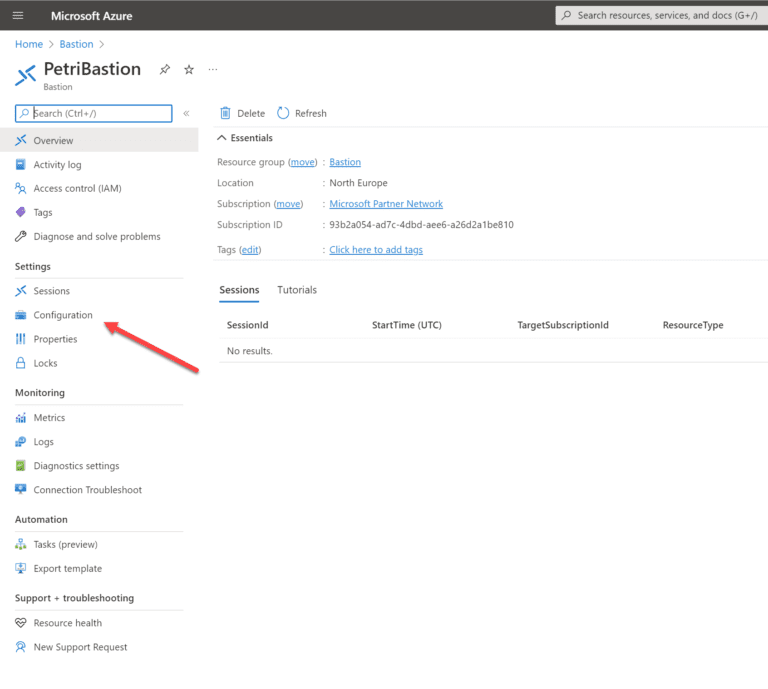

This is a good factor to consider when designing your Azure Network.Īzure Bastion has two parts for its pricing. You can decide to have a bastion host on a virtual network with a high number of VM’s. If you do not have many VM’s in a VNET, then it is pointless to run a bastion on it. After considering all of this and still you need to connect to the VM’s from the public internet, the best foremost secure connection is to select Bastion.Īt this moment, Bastion only supports virtual network deployment. However, it has some limitations, as well. Another way to securely connect is through point to site VPN. So, I believe the first step is to understand the real requirement, do you really want it? Is there any other way to securely connect to your VM’s? If you already have a site to site VPN or an Express route to your on-premises environment, you can use it to connect to the VM’s securely from an on-premise environment.
Azure bastion login free#
In my example, I am connecting to an Azure VM running as a WVD host which doesn’t have a public IPĬlick Connect - Bastion and click Use Bastion.īastion is not a free service there is a cost when you implement it. Connecting to the VM’s using BastionĪfter deploying the Bastion host, you can easily connect to it using the Azure portal.

Click Review + Create to create the bastion host. Also, select an existing Public IP or create a new one.ĥ. Select the Subscription, Resource group, Name, and select the Virtual network and the subnet you created earlier. To add bastion service, click + Create a resource and type Bastion.Ĥ. This is the virtual network where your bastion will be placed and connecting VM’s residing.Ģ. Log in to the Azure portal - Virtual networks, click Subnets.
Azure bastion login software#
When you deploy Azure Bastion, its provision inside of your virtual network, any VM running in the Virtual network does not need to have a public IP address, agent, or special client software to access through Azure Bastion.Īzure Bastion provides the jump host facility to the VM’s reside in the virtual network.

It provides secure and seamless RDP/SSH connectivity to your virtual machines directly from the Azure portal over TLS. What is Azure BastionĪzure Bastion is a fully managed PaaS service where you can deploy from the Azure portal. This post discusses what Azure Bastion is and how we can implement it step by step. This is only good for testing because it is not secure for a production environment.Īzure Bastion provides a secure and seamless RDP/SSH connectivity to your virtual machines directly from the Azure Portal over SSL. If you are connecting through public internet, VM running in on Azure should have a public IP, and you should enable the relevant network port access. When you run a VM in Azure, you can connect to it through public Internet or VNet connectivity to your on-premises environment or another instance running it in Azure.


 0 kommentar(er)
0 kommentar(er)
